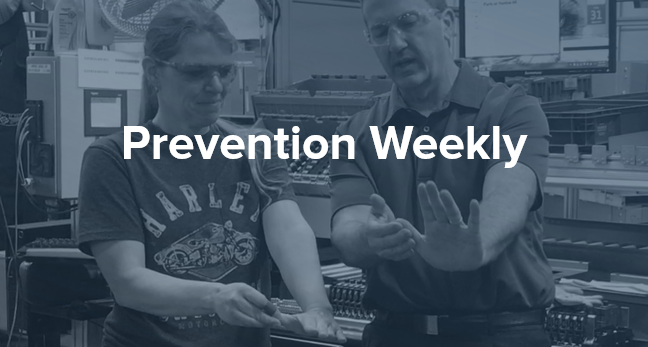Prevention Weekly delivers the best ergonomics, workplace athlete health, and safety leadership news right to your inbox every week.
Featured Article
A Technology Platform for Better Musculoskeletal Health Management
Most organizations we engage (large and small) are still using outdated paper methods or very basic technology programs to manage musculoskeletal health. Using an assortment of Excel spreadsheets, Word documents, and picture/video files makes musculoskeletal health management inefficient, difficult to standardize, and difficult to communicate the right information to the right people at the right time.
A Technology Platform for Better Musculoskeletal Health Management
Ergonomics
Make the Sit-Stand Switch
Studies show that intermittent standing counteracts what researchers call “sitting disease,” but how can organizations stand up to sedentary habits and build a new sit-stand culture? Make the Sit-Stand Switch is your guide for successfully adopting sit-stand furniture in your workplace. You will learn how to: Build mindshare among influencers and address concerns, design your program with an effective policy, process and communications, and choose what and when to measure results.
8 Fundamental Ergonomic Principles for Better Work Performance
Just imagine walking through the plant floor and instantly being able to identify risk factors that contribute to soft tissue injuries and disorders. Seeing the world through ergo eyes is like being able to see the potential injuries that could mar your stellar safety record so you can proactively make workplace design improvements to prevent that from happening. So, here are eight fundamental ergonomic principles to help you identify ergonomic risk factors and maintain your stellar safety record.
8 Fundamental Ergonomic Principles for Better Work Performance
Workplace Athlete Health
Proper Lifting Techniques
According to the Bureau of Labor Statistics (BLS), more than one million workers experience back injuries each year. One fourth of all workers compensation indemnity claims are a result of back injuries. Low back pain is one of the most common reasons that people miss work, second only to the common cold.
Free Injury Prevention Handout — Proper Lifting Techniques
Athletic Trainers Provide High Return On Investment In Today’s Workplace
With the ever increasing demand on output and return on investment in today’s workplace, employees in the occupational setting remain at risk of acute and overuse, on-the-job injuries. Their work requires special skills often including heavy lifting, carrying, repetitive movement and physical stress. Lost days from work can have a significant impact on a company’s bottom line and on the individual’s own productivity. “Athletic trainers’ expertise in musculoskeletal health makes them a vital part of an occupational health care team whether working as independent contractors or employed through a company, clinic, hospital or other facility,” says NATA President Jim Thornton, MA, ATC, CES.
Athletic Trainers Provide High Return On Investment In Today’s Workplace
Safety Leadership
A Visual Model to Simplify the Definition of Safety
Safety, simply put, is knowing what can hurt you, learning the things that can keep them from hurting you, and doing those things. This overly simplistic definition does not elaborate on the methodologies of mitigating risks, but it does focus on the basic objectives. It also provides a sensible framework to not only focus discussions to increase ownership, but also assist in developing new leading indicators for a company’s ever-maturing safety scorecard.
A Visual Model to Simplify the Definition of Safety
Ergonomics Plus solutions help proactive safety teams prevent musculoskeletal injuries and advance employee well-being.
